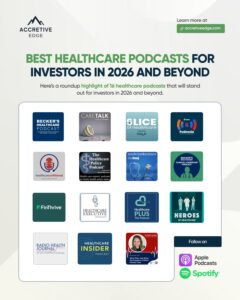Most marketing advice in healthcare gets stuck at thirty thousand feet — “Be authentic.” “Use digital.” “Build trust.” Helpful in theory. Not helpful when you’re staring at a blank page, a revenue target, and a compliance checklist.
This piece highlights eleven healthcare technology marketing examples that show you what effective healthcare marketing actually looks like — across B2B, provider outreach, and direct-to-patient campaigns.
B2B Healthcare Technology Campaigns: Data, Trust, and Education
a. Thought Leadership and LinkedIn Ads
GE HealthCare (NEXA): humanizing a complex brand through social storytelling
GE HealthCare partnered with NEXA to strengthen its digital presence and thought leadership through a social media campaign that made the brand more relatable while maintaining authority in a regulated B2B space.
The standout initiative, The Human Campaign, launched around GE HealthCare’s presence at Arab Health, spotlighted the people behind the company’s innovations rather than its equipment.
Supported by employee videos and ongoing digital storytelling, the campaign unified tone and messaging across markets and deepened engagement beyond major events.
By focusing on human stories instead of products, GE HealthCare built stronger credibility and global connection.
The campaign showed that even in complex enterprise healthcare, people-first storytelling can effectively combine emotional relevance with professional trust — turning a technical brand into one that feels both innovative and human.
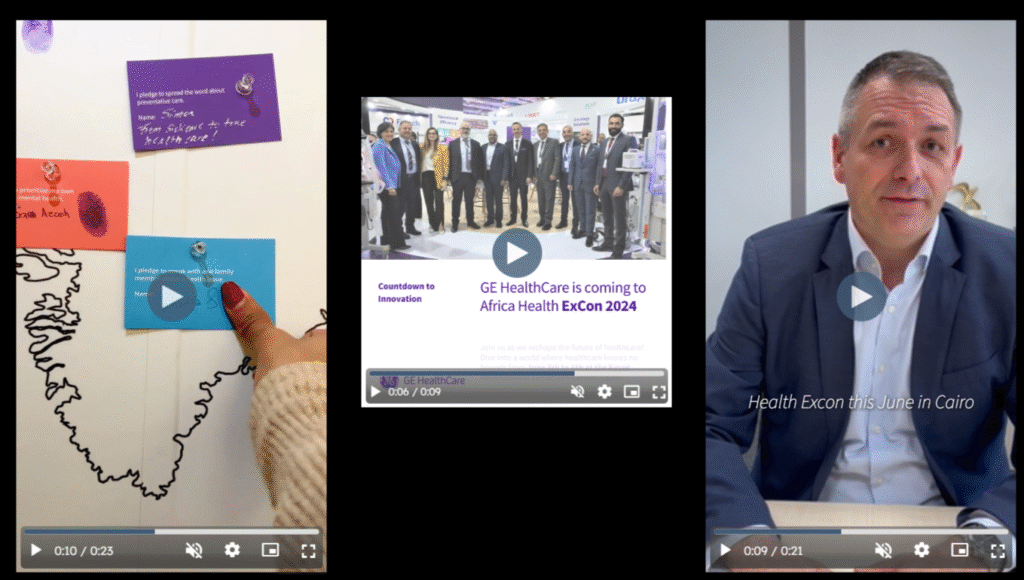
TigerConnect: building healthcare thought leadership on LinkedIn
TigerConnect worked with Directive Consulting to grow qualified enterprise leads through a focused LinkedIn Ads campaign targeting hospital decision-makers and IT administrators.
Using precise audience segmentation, custom creatives, and data-driven testing, the campaign refined ad copy and creative formats in real time while feeding engagement data back into LinkedIn’s targeting system.
This approach produced a 31% increase in paid leads quarter-over-quarter and lowered cost per opportunity.
By combining insight-led content with targeted advertising, TigerConnect strengthened its position as a trusted communication platform for healthcare enterprises.
The campaign showed that in complex B2B healthtech markets, well-structured LinkedIn programs built on relevance, precision, and measurable outcomes can drive both credibility and conversion efficiency.
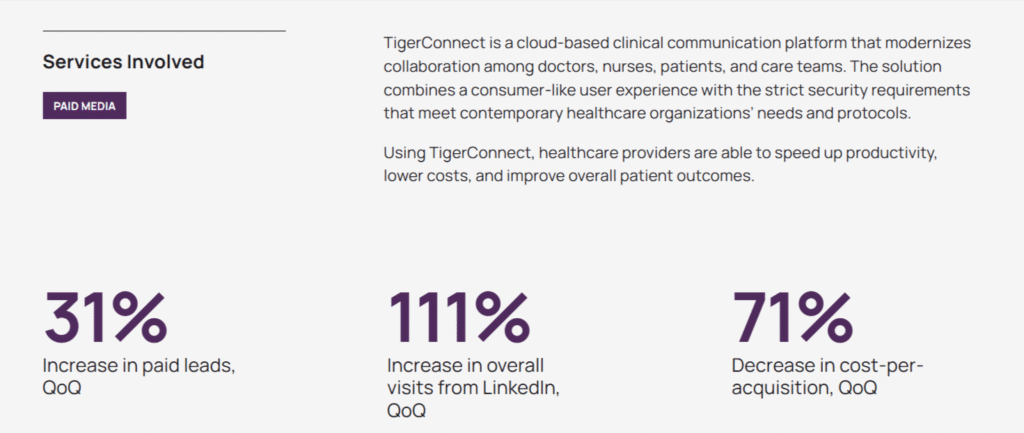
b. Webinars and CRM-Integrated Virtual Events
Optum (ON24): turning webinars into a measurable lead engine
Optum, a global health services company, partnered with ON24 to transform its webinar program into a measurable lead-generation engine.
Previously, its system required dual registrations and offered limited analytics, making it difficult to connect engagement data with CRM tools.
By integrating ON24 with Eloqua and existing CRM systems, Optum could track attendee behavior, engagement levels, and content interaction in real time.
Leads were scored based on actions like attending sessions, answering polls, or downloading materials, giving the team a clear view of marketing-qualified leads.
The new setup streamlined webinar delivery at scale and supported both live and on-demand formats, resulting in a 300% increase in MQLs and a notable share of leads coming from on-demand content.
Optum’s approach shows how integrating educational content with marketing automation can turn webinars from passive awareness tools into powerful, data-backed drivers of pipeline growth in healthcare marketing.
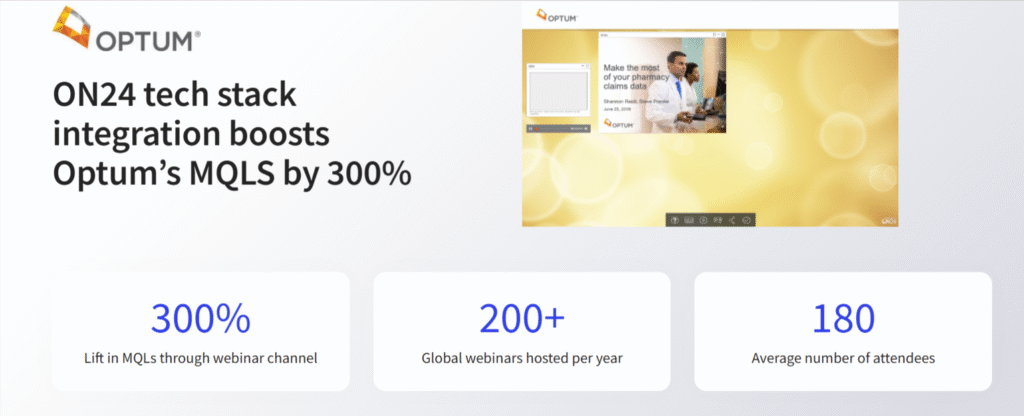
c. Account-Based Marketing (ABM) Done Right
Teladoc Health + Microsoft: coordinated ABM for enterprise buyers
Teladoc Health partnered with Microsoft and agency Merit Mile to run a joint account-based marketing (ABM) campaign promoting Teladoc’s use of Microsoft Azure and AI capabilities in virtual healthcare.
The campaign targeted C-suite and IT leaders in large healthcare organizations, focusing on how integrated cloud infrastructure could improve patient experience and care coordination.
Co-branded thought leadership content — including downloadable assets, video, and digital event materials — formed the backbone of the campaign.
Targeted outreach through email, LinkedIn, and Microsoft’s sales ecosystem ensured that engagement data flowed back to both sales teams for coordinated follow-up.
The program increased enterprise awareness for both brands and positioned Teladoc as a technology partner, not just a telehealth provider.
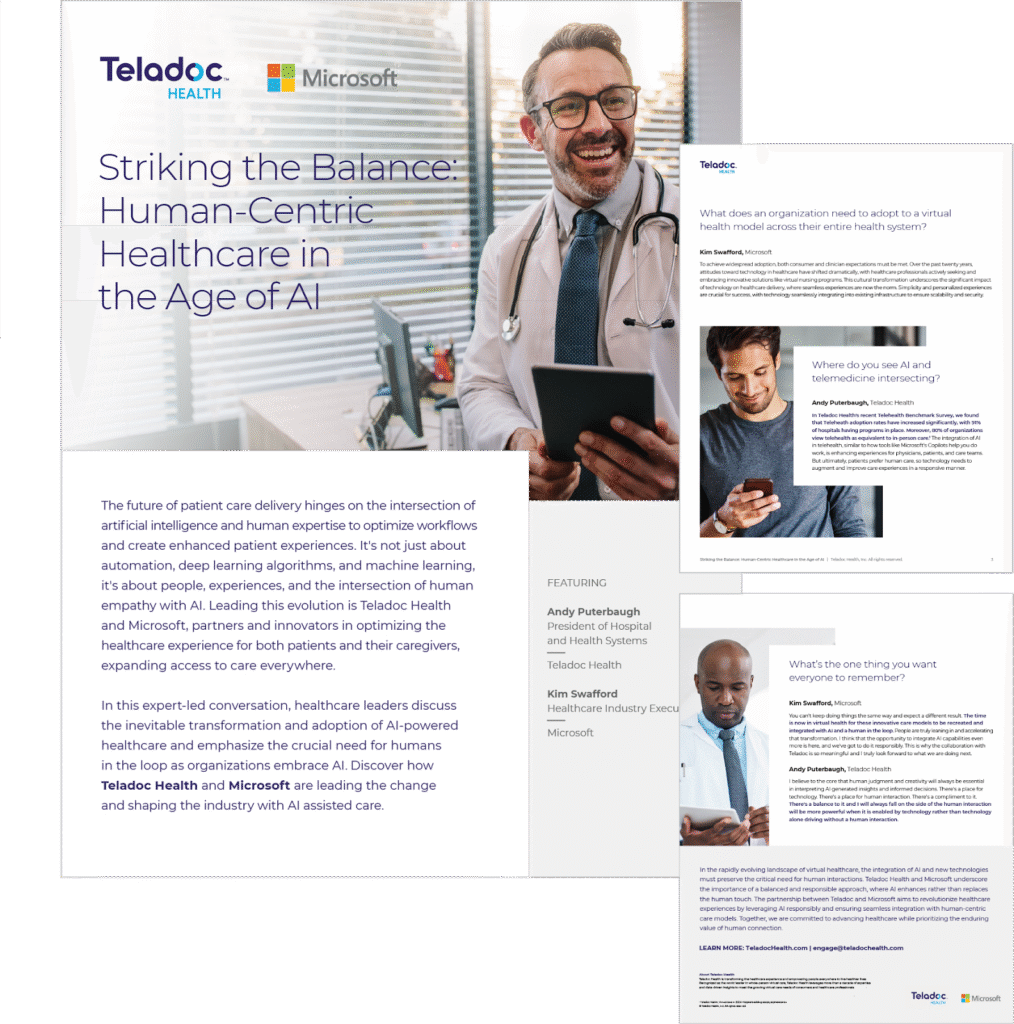
d. SEO and Inbound Education
The Independent Pharmacy (AIOSEO): driving organic growth through structured SEO
The Independent Pharmacy, a UK-based online pharmacy, partnered with AIOSEO to boost its organic visibility in a tightly regulated digital health market.
The team focused on technical SEO improvements rather than aggressive content tactics, using structured data and schema markup to help search engines better interpret site content.
FAQ, product, and breadcrumb schema were added, canonical tags were optimized to prevent duplication, and metadata was refined to strengthen topical relevance and compliance.
Within six months, these updates led to a 634% increase in organic traffic, growing monthly visits from about 163,000 to over 1.2 million.
The project demonstrated that in healthcare, effective SEO is driven by structure, clarity, and trustworthiness rather than promotional claims.

e. Visual Storytelling for Complex Products
Zepp Health (NoGood): simplifying medical device marketing through data and design
Zepp Health worked with NoGood to launch and scale Zepp Clarity One, a smart hearing aid device entering the U.S. market. The challenge was to build trust in a new product category while remaining compliant with medical advertising regulations.
The team developed a persona-based strategy that identified four core audience segments and tailored messaging, visuals, and landing pages for each.
They applied a full-funnel approach across paid search, social, display, and lifecycle email campaigns, supported by ongoing conversion rate optimization.
The results were striking: leads rose 207%, cost per lead dropped 67%, and purchases increased 766% quarter-over-quarter, with a 193% boost in return on ad spend.
Zepp Health’s campaign showed that even in regulated consumer health markets, data-driven testing, audience segmentation, and strong user experience design can combine to deliver both compliance and high-performance growth.
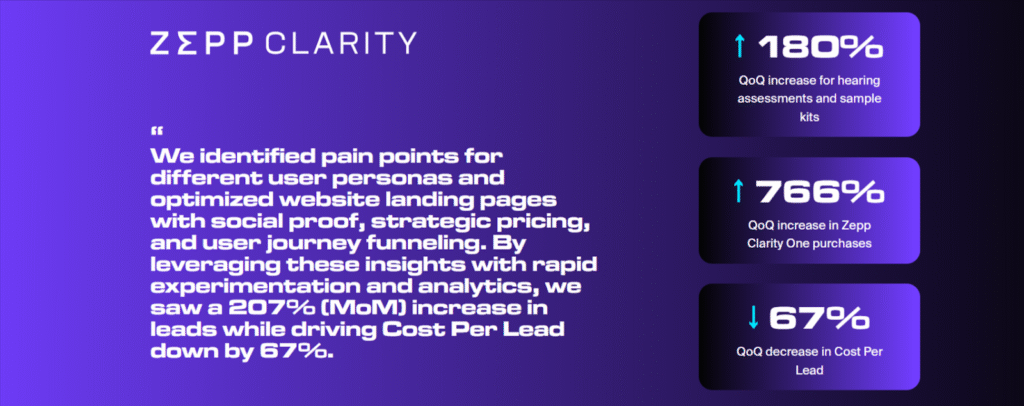
Provider Outreach: Influence Through Expertise
a. Clinician-Led Social Content
MedShr (Meta): reaching clinicians through targeted social advertising
MedShr, a platform for verified medical professionals to share and discuss clinical cases, partnered with Meta to expand its global user base and attract more radiologists to its app.
Using Facebook’s audience targeting tools, the campaign reached healthcare professionals by specialty and interest, focusing on the platform’s value for peer-to-peer case discussions.
Over 30 days, the campaign reached 300,000 people across 132 countries and generated 7,000 app installs.
By focusing on professional relevance and credibility, MedShr showed that social advertising can succeed even in specialized healthcare niches.
The campaign proved that precise targeting, authentic messaging, and a clear value proposition can drive meaningful engagement among clinicians while maintaining compliance in professional medical marketing.
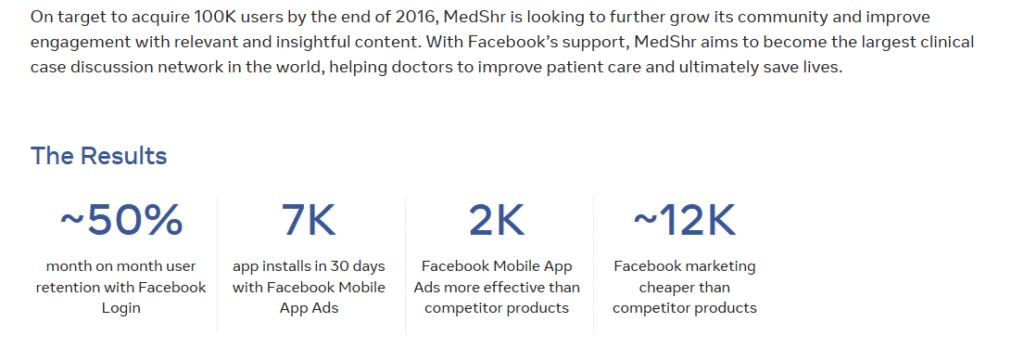
b. Partnerships and Educational Storytelling
Spring Health (NoGood): recruiting licensed providers with precision targeting
Spring Health partnered with NoGood to accelerate recruitment of licensed mental health providers across multiple U.S. regions. The company needed to grow its clinician network quickly while maintaining compliance with strict advertising and credentialing standards.
The campaign used a multi-channel approach — combining paid search, display, social, SEO, and conversion rate optimization — to target professionals by specialty, location, and licensure. Ad creative and landing pages were localized and refined to attract qualified leads efficiently.
The results were substantial: a 113% increase in qualified provider leads, a 149% lift in conversion rate, and a 58% rise in hires. By combining precision targeting with tailored messaging, Spring Health built a faster, more cost-efficient recruitment funnel.
The campaign demonstrated that data-driven outreach and audience segmentation can dramatically improve provider acquisition in a regulated healthcare environment.
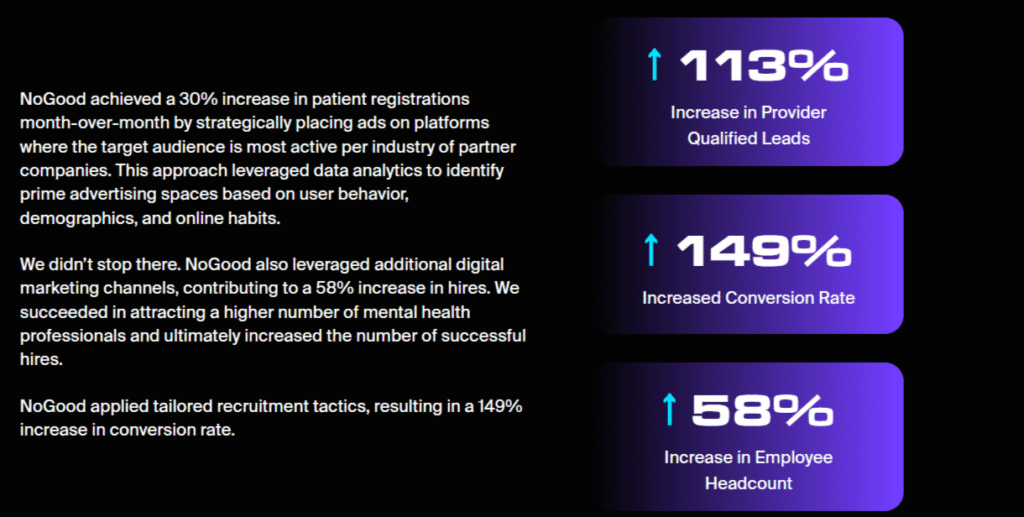
c. Event-Driven Storytelling
The GE HealthCare “Human Campaign” also served as an example of event-driven storytelling anchored to Arab Health 2024.
Rather than focusing on products, the campaign used people-first content — including employee spotlights, short interviews with clinicians and engineers, and behind-the-scenes footage from the event — to bring the brand’s innovation story to life across LinkedIn and other social platforms.
The content strategy followed a simple pre-, during-, and post-event framework: teasers built anticipation before the show, live updates maintained engagement throughout, and post-event recaps extended visibility after.
By keeping messaging consistent and human-centered, GE HealthCare increased event engagement, strengthened its share of voice, and drove qualified traffic and meetings.
This approach shows how tying authentic storytelling to major industry events can boost visibility, credibility, and measurable business outcomes among provider audiences.
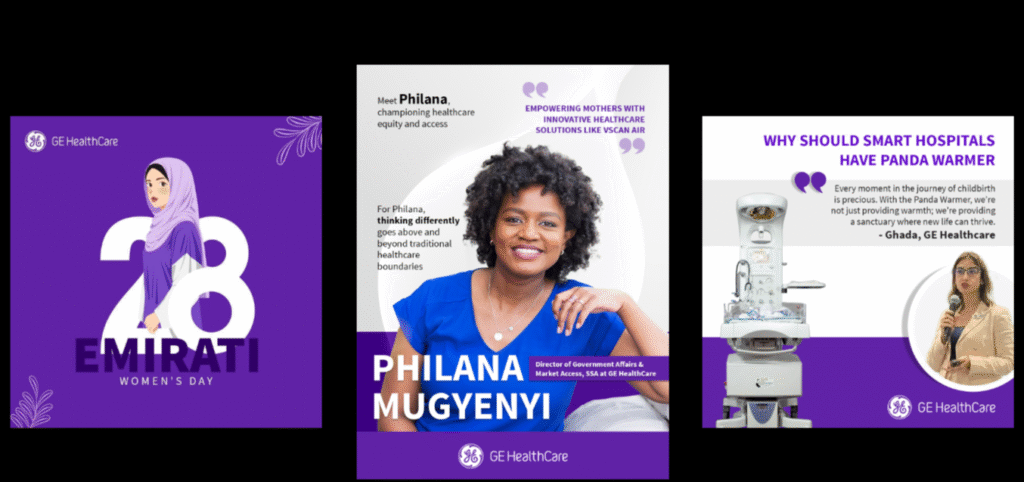
Direct-to-Patient: Empathy, Storytelling, and Measurable Engagement
a. Consumer-Friendly Influencer Campaigns
Elvie (Favoured): revitalizing a consumer health brand through creative testing and lifecycle marketing
Elvie, a women’s health technology company, partnered with Favoured to revive its declining online sales and improve return on ad spend.
The campaign used a multi-channel performance strategy that combined paid social, search, and on-site conversion optimization with creative testing and audience segmentation.
Favoured also enhanced email and lifecycle marketing to re-engage existing customers and extend customer lifetime value.
The results were significant: a 60% reduction in cost per acquisition, a 33% increase in lifetime value, and an improvement in return on ad spend from 0.4 to 3.
Elvie’s success shows that in regulated consumer health markets, sustainable growth comes from disciplined testing, diversified channels, and strong retention marketing that keeps customers engaged beyond the first purchase.
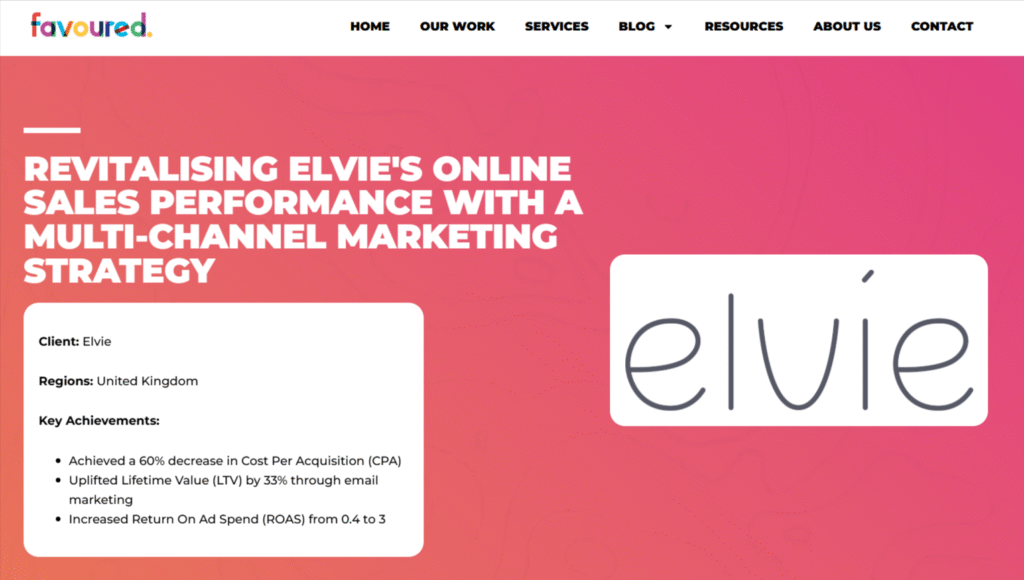
b. Creative Storytelling Under Compliance
“Lifting the veil on mental health” (OST Marketing): using social video to destigmatize mental health
OST Marketing partnered with Ieso Digital Health to create “Lifting the veil on mental health”, a social media video campaign released around World Mental Health Day.
The video aimed to reveal what living with depression and anxiety can feel like, using emotional visual storytelling rather than clinical explanation.
Distributed on Facebook and Twitter, the campaign reached 80,000 people and generated 38,000 unique video views, helping Ieso raise awareness of its free online therapy services.
Thoughtful, emotion-driven creative can make complex or sensitive health topics accessible and relatable. OST’s work with Ieso shows how healthcare brands can use social video to build empathy while maintaining compliance.
Video link: https://ostmarketing.com/wp-content/uploads/2016/10/OST_Ieso_Anxiety.mp4?_=1
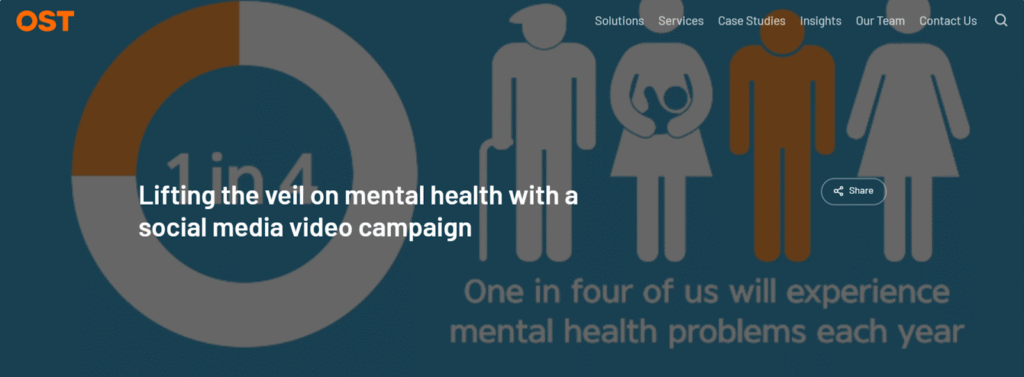
c. Omnichannel and Remarketing Loops
Doctify (The Media Image): driving dual-audience growth with paid search and social
Doctify, a UK healthcare platform that connects patients with private specialists, partnered with The Media Image (TMI) to grow both patient bookings and specialist sign-ups. Because each audience behaved differently, TMI built a segmented paid media strategy that addressed both groups effectively.
Google Ads captured high-intent patient searches for local specialists, while Facebook campaigns targeted healthcare professionals by role, interest, and geography to encourage new specialist registrations.
Continuous testing of ad creative, landing pages, and audience segments allowed quick optimization for performance.
The campaign delivered strong results within three months: a 172% increase in total conversions, 35% budget savings, and specialist sign-ups achieved at less than one-third of the original target cost per acquisition.
Doctify’s approach shows that when healthcare brands serve multiple audiences, tailored messaging and coordinated paid search and social strategies can drive efficient, measurable growth on both sides of the marketplace.
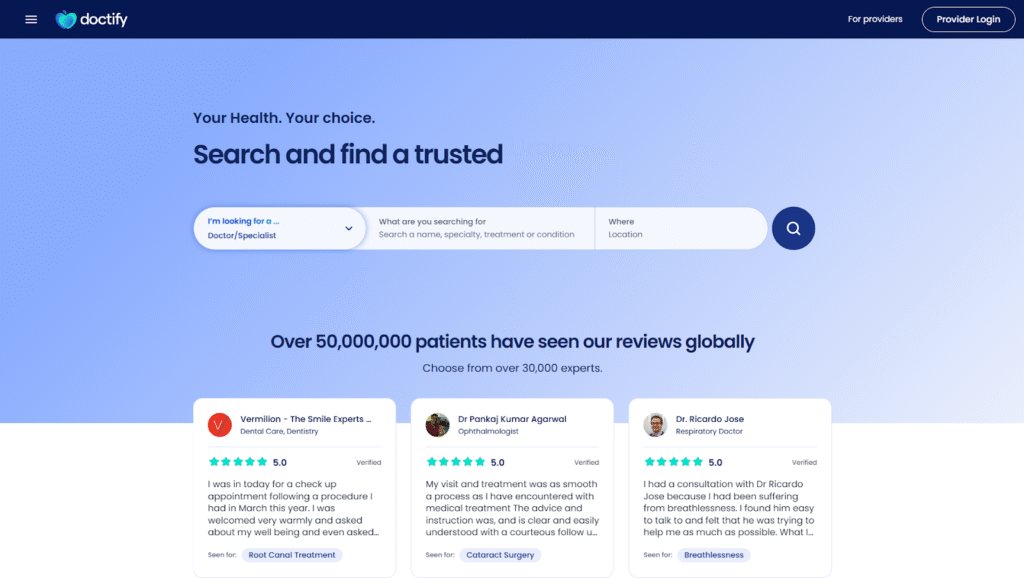
Key Takeaways for Healthtech Marketers
Lead with human stories: In both B2B and patient-facing campaigns, storytelling that highlights people — clinicians, engineers, or patients — builds trust and connection. Even for complex technologies, human-centered narratives make brands more credible and memorable.
Use data and integration to drive growth: When marketing systems connect engagement data with CRM and automation platforms, you gain a full view of the buyer journey. This makes it easier to track meaningful metrics like qualified leads, conversions, and lifetime value — not just impressions or clicks.
Balance compliance with creativity: Healthcare marketing can follow strict regulations without losing impact. Successful campaigns use creative testing, thoughtful messaging, and visual storytelling to educate and inspire while staying compliant.
Target precisely and personalize outreach: Whether you’re engaging enterprise buyers, recruiting clinicians, or reaching patients, audience segmentation is key. Campaigns that match content, tone, and channels to specific roles and needs consistently perform better and convert faster.
Test, measure, and optimize continuously: Effective marketers treat every campaign as an ongoing experiment. Through A/B testing, SEO improvements, and post-event analysis, they refine what works and scale results — ensuring growth is both measurable and repeatable.
If you’re building out campaigns like these and want a second set of eyes — or you’re stuck translating product value into pipeline — happy to connect. Let’s talk.


